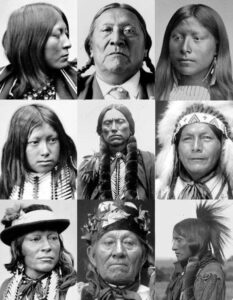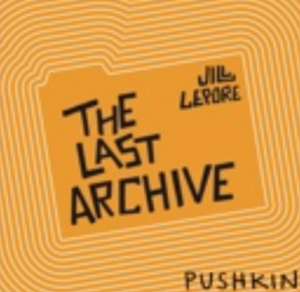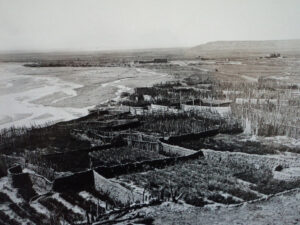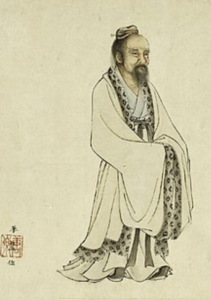#NativeAmericanHeritageDay
November 26, 2021“Native Americans are the keepers of traditions and defenders of our natural resources. This Native American Heritage Day, I honor our culture and our ancestors. At the Interior, we will continue to include Indigenous knowledge as we protect our lands for future generations.”
-Secretary Deb Haaland, 54th Secretary of the Interior, 35th generation New Mexican, Pueblo of Laguna Tribe
[Image: Lakota Man/Twitter]
‘That’s what gods do, they spin threads of ruin through the fabric of our lives, all to make songs for generations to come.’ -Anthony Doerr ‘Cloud Cuckoo Land’, p.439
Post
C
o
l
o
n
i
a
l
Stress
D
i
s
o
r
d
e
r
PCSD
“We’re still in the genocide. It’s still happening; we’re still doing it.”
Why?
We need to look at our “individual power in relation to the world.” -Rose
Rilke: “…blessed our those who stood quietly in the rain. Theirs shall be the harvest; for them the fruits. They will outlast pomp and power, whose meaning and structures will crumble. When all else is exhausted and bled of purpose, they will lift their hands, they have survived.”
Mixed-media artist Rose B. Simpson lives and works from her home at Santa Clara Pueblo in New Mexico.
(This piece was commissioned for the the Conspire conference, Center for Action and Contemplation, in New Mexico.)
https://www.rosebsimpson.com/about
[Rose B. Simpson, Holding it Together (detail), 2016, sculpture]
Mitákuye Oyás’iŋ
All our relations
The Last Archive
Jill Lepore, historian and Harvard professor
“Indigenous paradigm, a paradigm about relationships–all things are kin, rocks the skies, trees, family…”
https://podcasts.apple.com/us/podcast/the-last-archive/id1506207997?i=1000540005084
LATIMES
“The Indigenous Serrano Language Was All But Gone, This Man is Resurrecting It.”
When Ernest Siva was a boy on the Morongo Reservation in Riverside County, he listened to the music and stories of his ancestors, who had lived in Southern California long before the land was called by that name.
He recalls running around a ceremonial fire on the reservation at age 5 as a weeklong ceremony honoring those who had died the previous year culminated with the burning of images in their likeness. Dollar bills and coins were thrown into the fire in tribute as tribal elders sang songs reserved for special occasions. Siva and his cousin chased after the singed money that fluttered out of the flames, largely ignoring the traditional lyrics in the background.
The specific words and rhythms are now distant memories for the 84-year-old Siva, a Cahuilla/Serrano Native American.
Siva is working to change that. For the last 25 years, the Banning resident has been a tribal historian with the Morongo Band of Mission Indians.
CIVIL EATS
In the face of climate change and persistent droughts, a growing number of people from Zuni Pueblo in New Mexico and elsewhere are adopting the traditional farming practice.
Historic Zuni waffle gardens, circa 1919. (Photo courtesy of Kirk Bemis)
“It’s going to be difficult, but in the meantime, we still have to do what we can to find ways to adapt and live with it. And I think that the waffle gardens are one tool for us to make it through.”
(The) hope is for every household within the Zuni village to have a backyard garden, and that such a shift could cut a family’s need to shop for groceries in half.
“A small, 4-by-8 [foot] garden will get you a good four to five buckets full of corn, which is not enough to completely live off, but enough to feed our families, survive, and carry out our traditions.” He also thinks it’s important for the Zuni people to lessen dependence on grocery stores, which the pandemic showed are vulnerable to supply chain disruptions.
https://civileats.com/2021/10/26/resurgence-waffle-gardens-helping-indigenous-peoples-thrive-amid-droughts-grow-food-less-water/
Maria Popova
The Marginalian
“Ever since we climbed down from the trees, we have been looking up to them to understand ourselves and our place in the universe. “Nothing is holier, nothing is more exemplary than a beautiful, strong tree,” Hermann Hesse wrote a century ago in his sublime sylvan love letter, affirming that “when we have learned how to listen to trees, then the brevity and the quickness and the childlike hastiness of our thoughts achieve an incomparable joy.”
Centuries, millennia before Hesse — before Wangari Maathai won the Nobel Prize for her courageously enacted conviction that “a tree is a little bit of the future,” before scientists uncovered the astonishing language of trees, before Western artists saw in tree silhouettes a Rorschach test for what we are — the indigenous artists and storytellers of the Gond tribe in central India have been reverencing the secret lives of trees as portals into the inner life of nature, into the wildness of our own nature, into a supra-natural universe of myth and magic.”
The Secret Life of Trees: Stunning Sylvan Drawings by Indigenous Artists Based on Indian Mythology
Thanks + Giving
Science of Mind
‘Stop and contemplate the reality that every single thing right now around us–every chair, rug, lamp and table–was first an idea, and then someone set about to make it. Every piece of art, every movie, book and video game was first an idea, and then someone followed the inspiration and created it. Every moment of laughter, every conversation, every connection between us is first an impulse of love, and then we decide to be part of it. Every child, every smile, every time we hold hands, overcome a challenge and thrive beyond a heartbreak is an expression of life. Even a weed poking through the concrete or the act of sitting by a deathbed can be a sacred moment when we behold life and are grateful.’
Louis Armstrong, What a Wonderful World, spoken intro.
“What a Wonderful World” [1970 Spoken Introduction Version] along with Oliver Nelson’s Orchestra is a song written by Bob Thiele (as George Douglas) and George David Weiss. It was first recorded by Louis Armstrong and released as a single in 1967. Thiele and Weiss were both prominent in the music world (Thiele as a producer and Weiss as a composer/performer). Armstrong’s recording was inducted in the Grammy Hall of Fame in 1999. Intended as an antidote for the increasingly racially and politically charged climate of everyday life in the United States, the song also has a hopeful, optimistic tone with regard to the future, with reference to babies being born into the world and having much to look forward to. The song was initially offered to Tony Bennett, who turned it down. Thereafter, it was offered to Louis Armstrong. -RoundMidnightTV
The Way of Chaung Tzu [Thomas Merton]
In the age when life on earth was full, no one paid any special attention to worthy men, nor did they single out the man of ability.
Rulers were simply the highest branches on the tree, and the people were like deer in the woods. They were honest and righteous without realizing that they were ‘doing their duty.’
they loved each other and did not know that this was ‘love of neighbor.’ They deceived no one, yet they did not know they were ‘ben to are trusted.’
They were reliable and did not know that this was ‘good faith.’ they lived freely together giving and taking, and did not know that they were generous. For this reason their deeds have not been narrated. They made no history.
They simply lived, lived simply, in the TAO of being. -dayle
“On this side of death we play roles. So long as we seek to please the audience, death, who needs no approval, plays us.” -Rilke
Matt Haig, author and journalist:
Look at the sky; remind yourself of the cosmos. Seek vastness at every opportunity in order to see the smallness of yourself.
“Today, say grace thinking about the Earth, about every plant, animal and person who made it possible to enjoy the things you are grateful for. Recognize this as Spirit’s Grace during Itself into and through all creation.”
-Science of Mind







